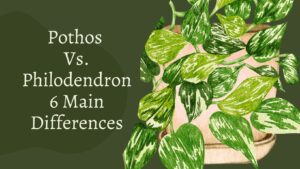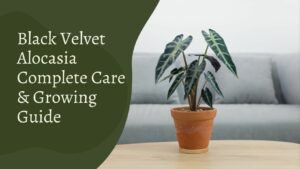
Some plants can’t stop giving us a hard time either because we don’t understand how to care for polka dot plant or we don’t have the proper condition for them in the first place.
Then there are those plants that look fine one day then day look completely dead. Polka dot plant is one of those plants. It is also known as hypotheses Phyllostachys and spotted leaf plant.
The polka dot plant is described as a needy and pretty temperamental plant. It’s a gorgeous houseplant with vivid pink colors and that sort of dark green foliage, and honestly.
Polka dot plant looks amazing in your home and definitely adds a beautiful pop of color to any space. In this article you will cover all you need to know about caring for the polka dot plant.
These plants do have relatively simple care needs it is just a matter of perfecting those needs as these plants are very dramatic. so even as the slightest change to their needs or your care routine made them kind of act up. So that’s something to keep in mind if your plant seems unhappy and if your plants look unhappy then go ahead and try these things to revive it.
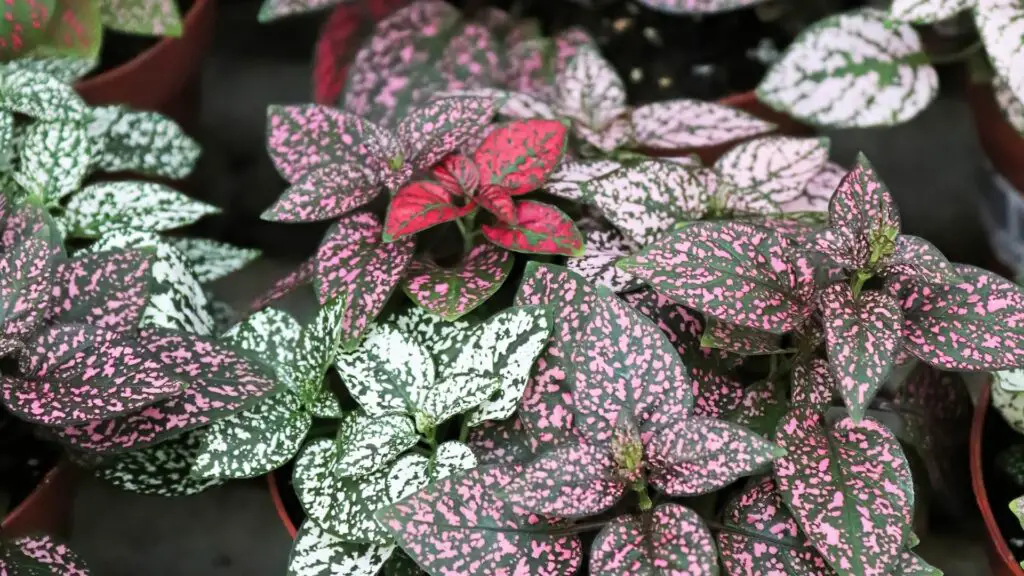
Watering:
Polka dot plant watering is an essential thing for polka dot plants care. These plants need to have moderately moist soil kind of all the time so when you forget to water it, it will shrivel up and look like it died but don’t fret. A nice healthy watering will revive your polka dot plant. One way to keep this plant happy is to give it a little splash of water daily. If you are unsure you can scratch the soil’s surface and if the soil is even beginning to feel like it’s drying out then it’s time to give this plant a watering.
Humidity:
Now if you are watering it correctly but it’s not getting enough humidity, either play dead or it will start to get extremely fuzzy. Plants are trying to get more moisture from their surroundings if they have fuzzy edges on their stems and around their leaves and foliage.
This means that they are trying to get more moisture from the air and from their surroundings. So that means it indicates that you are not providing your polka dot plant with enough humidity.
Now these plants aren’t planned for humidity; they need at least 50 percent humidity. The best and simple thing you can do is pick up a hygrometer and evaluate the exact reading of humidity levels. A mid-sized room at 50 humidity requires two humidifiers.
Sunlight:
There are questions in every spotted leaf plant lover is how much sun does a polka dot plant have?pink polka dot plant like bright sunlight, so keep them in the window that gets the most light. That doesn’t mean they don’t do well in low light, but it means you need to water them less.
Your polka dot plant will fade in the sun if you give it a lot of light. On the other hand, if your plant doesn’t get enough light, it will grow leggy and look bad. They do very well with full-spectrum lighting because full-spectrum lighting makes the day last longer. It’s possible to get bulbs for any light fixture that are in the whole colour range.
See detailed guide about chinese money plant sunlight care also!
Fertilizer:

You can fertilize these plants and it’s probably encouraged. They’re pretty heavy feeders so feed them with a diluted liquid fertilizer pretty well balanced in the spring end of summer.
If you’re providing them too much too quickly the leaves you will see start to get crispy the tips that are being over-fertilized. The best way to fertilize it is to take little fertilizer in a cup or container and mix it with water making it extremely diluted and feeding plants with that.
If you over-fertilize your plant don’t worry too much you can chop the leaf off and move on from there. It is easy to do and then tweak your measurements for the next time you feed.
Soil:
Keep in mind that you need rich, well-draining soil to plant them in. So you want a soil with peat or core in it to hold moisture. Pertile or pumice are both good drainage materials.
So if you say you have soil in the polka dot plant that seems to be holding a lot of moisture but doesn’t have enough drainage add some pumice or add some perlite to it so it drains well.
Prune Polka dot plant:
To keep your pink splash plant or polka dot plant looking great is to prune it regularly because they will get rangy even with bright light.
Depending on the time of year, you will need to pinch or prune them on a regular basis. They will grow up and start to look a little rangy, so you will need to do this on a regular basis.
When it’s warm you might pinch them every week. At other times of the year, you might pinch them every two to four weeks to keep an eye on them. When they start to grow here you’ll know they need it. At that time cut back the parts of them that don’t look good.
How to propagate polka dot plant:
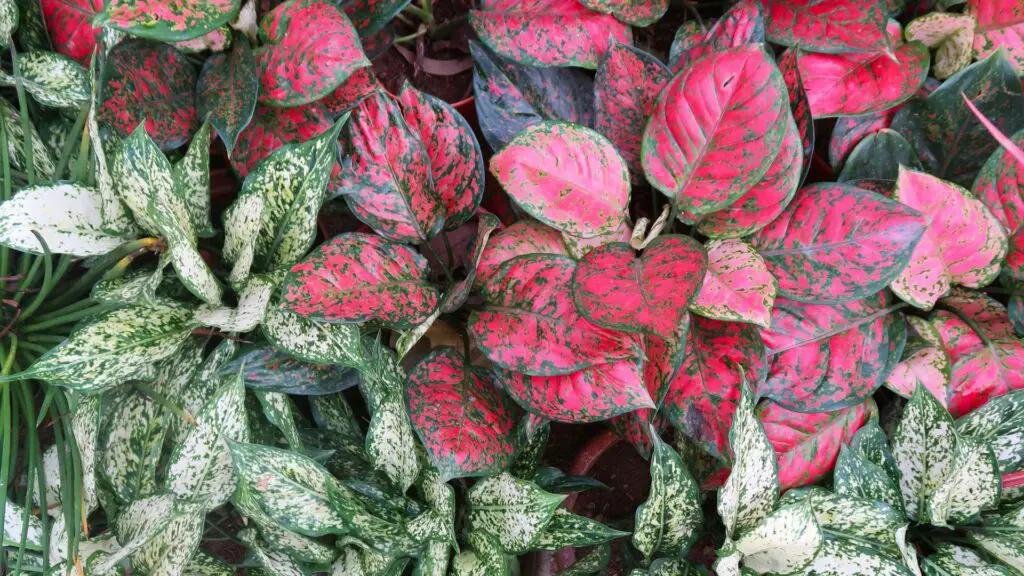
Propagation through water:
Polka dot plant propagation through water is super easy, so we will trim the tips of the polka dot plants when they start to get leggy and bare leaved.
We will pull off the bottom a few leafs at the nodes usually try to pull off about four leaves two nodes empty plus the very base of the plant and just stick that right into the water and place it in bright indirect sunlight without burning the leaves.
It takes about a week and a half to two weeks for the root to start form usually they form through the base where you cut the plant and then begin to come in on the nodes and make sure that they have leaves on top to pull in the light.
Propagation through soil:
plant propagation through water is by stem cutting. So take a stem cutting the longer, the better cut them in such a way that you have at least two leaves on the top and remove all the lower leaves.
Take a container and fill it with a well-draining mix of sand and cocopeat in the same proportions that you would use to grow plants in water. This is also what you can do when you repot this plant. Take a cutting and put it in a container with soil. Then water the soil.
Keep it in a shaded or bright location. Don’t keep moving the plant because that would disturb the root development. In a few weeks new roots form and repot it after two months.
Pest and disease on polka dot plants:
There are some common peats on polka dot plants, like gross mealy bugs, squishy aphids, and creepy spider mites. When you buy a plant from a nursery, you might find some bugs in its crevices. They can also come from the soil.
They get into your plant and eat all the sap from your plant, making them sick and even killing them.
Polka dot plant problems and solutions:
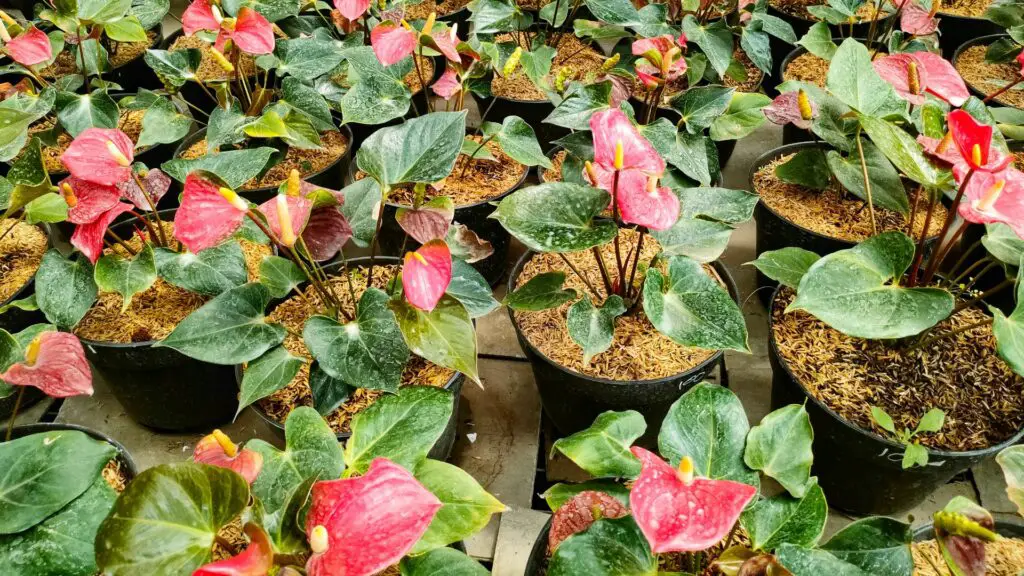
Curling leaves:
Leave curling problem is one of the most common problems in the polka dot plant. Solution of this problem is to cut the affected leaves.
If you don’t cut the leaves the virus attack can spread to other leaves as well. After you do this, you can spray your plant with a mixture of fungicide and water to kill the virus. Most of the time, this problem is caused by too much sunlight.
Leaves turning brown:
- The main reason for the problem is underwatering because our plant isn’t getting enough water its leaves will start to turn brown. The answer to this problem is that we should always water our plants at the right time.
- if your humidity is low, your plant will start to dry out and turn brown. So you can keep the polka dot plant’s humidity level up by using a humidifier or by munching on it, so that it stays healthy.
- Over-fertilizing is the third cause of brown plant leaves. To prevent your plants from turning brown or becoming unhealthy, use the correct amount of fertiliser for their specific needs.
Leaves turning yellow:
Leaves on polka dot plant become yellow because of flowing thing:
- watering issue
- insufficient light
- lack of nutrient
- pest infestation
So keep your plants green by giving them proper water, proper light, and nutrients and saving them from pests and diseases.
Life span of polka dot plant:
Polka dot plant has brightly patterned leaves. The most frequent polka dot has pink leaves with green spots. Other variants include: Beautiful red, purple, and white polka dot plants are available.
Polka dot plants are so easy to plant because they are native to warm climates gardeners treat them as annuals. Thus replacing them with new plants every year. These plants are the best planted in spring. They grow moderately and remain small once they have matured if they are growing indoors.
A full-grown polka dot plant completes its life cycle within a year, but if you grow it indoors you prolong its limited lifespan. You may still grow them outdoors and propagate them afresh each year.
While we may look at the short lifespan of hypotheses sanguinolenta as a drawback to growing this plant its propagation is a huge advantage. The easiest and most common propagation method is cuttings.
Types of polka dot plant:
Polka dot plant has a variety of species available in gardens across the world. These varieties all feature foliage in different rich shades, different sizes and shapes. Despite the fact that their different appearances plant care is the same for every variety. The varieties are following:
- Splash series: The splash series is an eye-catching variety that features vivid green foliage with large splashes, pinks, reds, and whites. Red polka dot plant in splash series looks as fascinating as purple passion plant.
- Confetti Series: The confetti series is like the splash series. But its marking is more spread across the foliage like a shower.
- Pink polka dot: The pink polka dot plant has pleasant pint spots on green leaves.
- Carmina Series: The Carmina series produces red hot spots and looks so beautiful.
- Wit Series: The wit is a fascinating variety that produces white leaves with a striking marble pattern.
How to prolong polka dot plant lifespan:
The hypoestes polka dot plant is easy to grow but its main drawback is its short lifespan. After flowering the plant becomes dormant and maybe die completely. The pink spotted plant lifespan can be prolonged by picking the buds before they flower.
This is a common thing that many gardeners do when they grow it as a house plant. When grown outside the plant grows every year in USDA zones that aren’t too hot or cold. The polka dot plant looks its best when grown in a low-light area.
That could make the plant look long and weak. Keep your plant in a place where it can get bright but not direct light. Keep it healthy and strong by moving it in this way.
Polka dot plant care outdoors:
Polka dot plant thrives indoors but when grown outdoors it needs indirect bright light. So choosing a location where it receives enough sunlight and having a shaded area is a good place for them.
Outside polka dot plant can be suspected of getting attacked by pests like mealybugs and aphids. Which can be solved by pesticide. These plants grow in low light conditions so when they get enough they become more greener. Still if they are not getting sufficient bright light.
The polka dot plant becomes unhealthy and has long stems that are weak to handle the burden of branches and leaves. They become leggy because they stretch themselves in search of light.
Polka dot plant indoor care:
When you decide to plant your polka dot plant indoors then you have to take full care of them by following points:
- By placing them in a silling of window or any place that has full access to sunlight. The polka dot plant needs proper light to grow beautifully.
- Properly giving them proper water and doesn’t give them water until its soil becomes dry.
- Maintaining the proper temperature for the idle polka dot plant is 60 to 70 degrees.
Are polka dot plants poisonous to cats:

Polka dot plant is not poisonous to cats. Still other plants like the snake plant, monster, philodendron and others are toxic to cats. These plants are not likely to kill your cat.
Still they can hurt your cat’s health because your cats can have vomiting and fatigue. If they chew them but are totally safe for your pets. So if you are an animal lover you can have a polka dot plant without a doubt.
Polka dot plant benefits:

There are so many beautiful plants for you have all of them have their benefit and polka dot plants are one of them they have the following benefits:
- Advantages of having them in direct sunlight because polka dot plants like light too much.
- Polka dot plants also add fresh air indoors then others can have a feeling of relaxation.
- They can also purify the air by removing certain toxic chemicals in the air.
- It can also reduce dust from the environment by increasing the humidity inside the house, even in the outside environment.
Conclusion:
If you are a polka dot plant lover then you can have them by taking proper care of them. If you want to grow polka dot plants indoors. Then you have to provide the appropriate light, humidity, fertilizers, temperature, water. And if you’re going to grow in outdoor then you have to provide the proper light, water, fertilizers and also shade to protect them from sunburn.
If you provide these things to polka dot plant in both indoor or outdoor situations. You can also mix different varieties to create an attractive view of your home. For maintaining all the types of polka dot plants, you have to protect them from pests and diseases.
I hope you get clear about the care of the polka dot plant and answer all questions you are searching about the care of the polka dot plant. This article is all about polka dot care in both indoor and outdoor gardens.

Hi This is Maria, We are a team of gardening enthusiasts with a passion for gardening. We have tried to bring you tips and advice enabling you to grow and maintain a healthy and beautiful garden. We Hope You Find it Useful.


